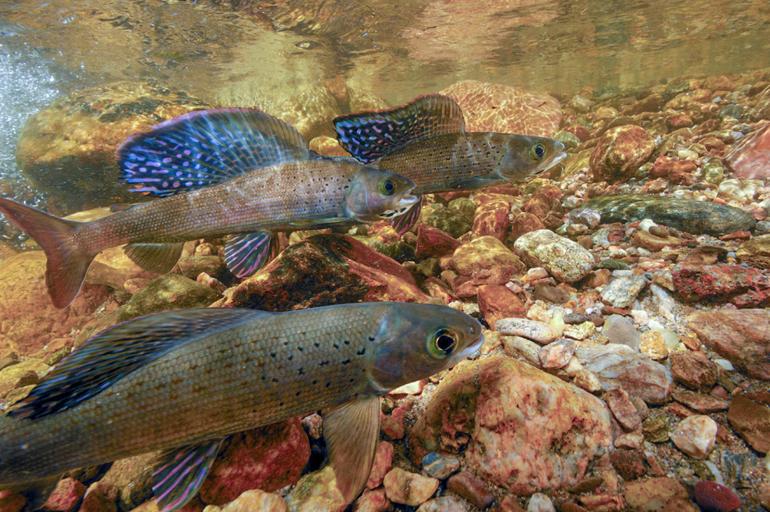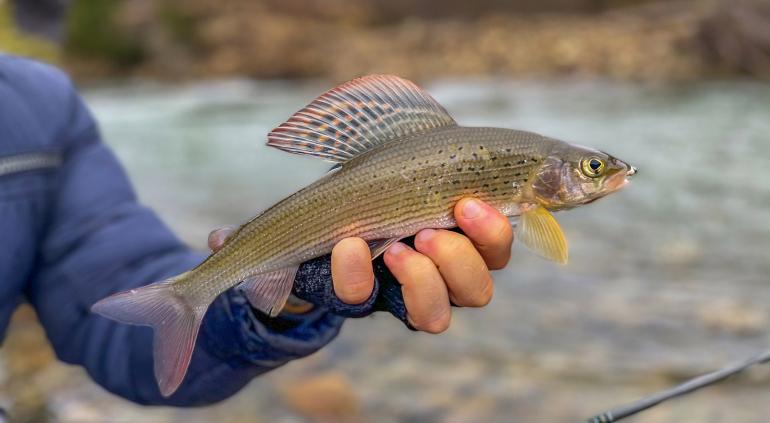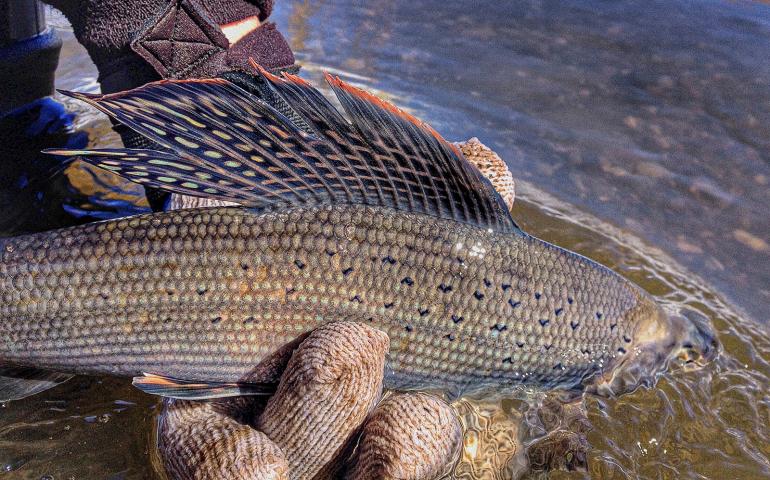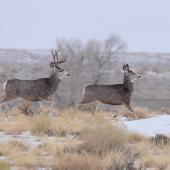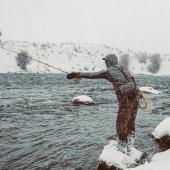Silver Bullet
Montana's small-bodied, big-finned native, the arctic grayling.
Arctic grayling are as Montana as it gets. Scattered mostly across the southwestern corner of the state, these unique, beautiful fish have long been overlooked by anglers preferring the standard native, and non-native, trout species that the West has long been known for. However, like the mountain whitefish, arctic grayling deserve respect. They’re fun to catch, they fight hard, and they look cool. What more could an angler want?
Montana is the only place in the contiguous United States where anglers can find fluvial, or river-dwelling, arctic grayling (a lake-dwelling variety can be found in a handful of lakes around the country, mostly in the Rocky Mountain West). Grayling found their way here during the final stages of the last Ice Age, after the glacial sheets that once covered the state retreated. There used to be some in the rivers of Michigan, though those populations have since gone extinct. Like trout, grayling require cold, clean water to survive. Unfortunately, conservationists fear that our grayling population could succumb to a similar fate as Michigan’s should they remain unprotected. Thankfully, the species is currently under review for an Endangered Species Act (ESA) listing. Because of their diminished population and range, all grayling caught in Montana must be released immediately.
Arctic grayling aren’t just emblematic of Montana, but of Montanans, too: hungry, hard-fighting, resilient creatures who’ve held onto their haunts despite pressures from non-native transplants.
These hoary, shark-finned fish once thrived throughout Montana, especially in the headwater streams of the Missouri River. However, only a fraction of grayling, in a fraction of their original range, remain compared to when Lewis and Clark first encountered the fish on the Mighty Mo’, remarking on the “new kind of white or silvery trout.” The most productive grayling fishery in the state—the Big Hole River—has suffered tremendously in recent years, a result of rising river temperatures and diminished flows, agricultural diversion, increased pollution, angling pressure, and competition with other species. While grayling coexist well with cutthroat trout and other fish they evolved alongside, more aggressive non-native species, like brown trout, often beat them out for habitat and food sources.
Fearing that the state’s arctic grayling would go extinct, Montana Fish, Wildlife & Parks (FWP) introduced them to a variety of alpine lakes throughout Montana and Yellowstone National Park in the early twentieth century. Although many of these projects have been successful, the subsequent generations of grayling spawned in still bodies of water cannot be relocated to river environments. For some reason, they don’t survive long enough to reproduce. Long story short: once all the fluvial Montana arctic grayling are gone, they’re gone for good.
These hoary, shark-finned fish once thrived throughout Montana, especially in the headwater streams of the Missouri River. However, only a fraction of grayling, in a fraction of their original range, remain.
Though once believed to be the same as those found above the 45th parallel, Montana’s arctic grayling, Thymallus arcticus montanus, are genetically different, a disjunct subspecies not found anywhere else on earth. Smaller than their northern counterparts, our grayling average roughly 7-10 inches compared to the 10-14 inchers commonly found in Canada and Alaska. But don’t let their diminutive size fool you: pound for pound, Montana grayling fight hard. And while rainbows, cutthroats, and browns often grow wary of an angler’s tricks, these fantastic native fish are more willing to bite anything thrown their way. Given their small size, rather than your standard 5-weight, 9-foot rod, opt for a smaller, lighter set-up. To combine novelty with solitude, head for the pristine waters of an alpine lake (FWP, fly shops, and local guidebooks can tell you which lakes hold grayling).
Bringing a grayling to net is a fulfilling endeavor. These beautiful fish are recognized by their oversized dorsal fin speckled with brilliant hues of red, purple, and blue. Because of their small, downward-pointing mouths, grayling are unable to “sip” as a trout would, making them more likely to jump out of the water to grab your fly. Given that it’s a species of special concern, anglers must handle grayling properly, lest they cause further harm to the already-fragile population.
Arctic grayling aren’t just emblematic of Montana, but of Montanans, too: hungry, hard-fighting, resilient creatures who’ve held onto their haunts despite pressures from non-native transplants. So this year, rather than going back to the same ol’ honey-hole season after season in search of more of the same, find—or better, make—the time to venture off the beaten path and enjoy the lesser-known spoils of Montana’s waterways, particularly our very own fluvial arctic grayling.
It's a Grey Area
by Carson Sprague
In August 2024, the U.S. District Court for Montana ruled that FWP was at fault for Montana arctic grayling protection under the Endangered Species Act (ESA). The fight to protect grayling has been an arduous ordeal, first brought to the attention of the U.S. Fish & Wildlife Service (FWS) in 1982, who up to this point have deferred and denied the species from designation under the ESA. In 1991, anglers and conservation groups petitioned to protect grayling, and in 1994, FWS acknowledged that protection, though warranted, was not a priority. Thus, the species was merely listed under “candidate” status, which remained for 20 years, until the agency, in 2014, deemed that state conservation measures and alleged increases in population precluded their designation as an endangered species. Now, after years of relentless legal pursuit, the agency’s ruling has been overturned based on lack of evidence, and FWP was given 12 months to conduct new research to help determine if the species qualifies for ESA protections. There’s still a long way to go until anything is concrete, but hopefully the future is bright for the Montana arctic grayling.
This piece originally appeared in the Spring/Summer digital edition of Montana Fly Fishing Magazine. You can check out the article here.


